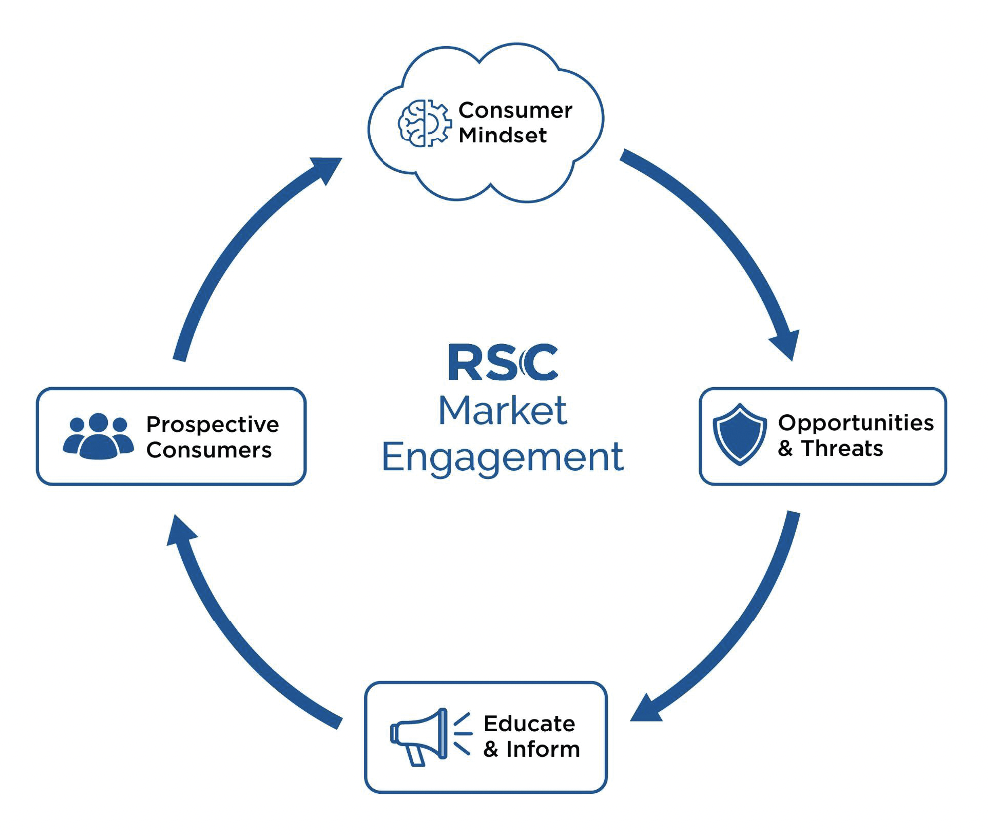What initiates the journey of a prospective refractive patient toward considering procedures such as LASIK, SMILE, PRK, or a phakic IOL? Often, their interest is sparked by personal connections such as friends or family or by something encountered online. In some cases, frustration with glasses or contact lenses may be the tipping point. Whatever the initial motivator, the information they encounter at this critical juncture—the top of the funnel (see Critical Engagement at the Top of the Funnel)—can either propel them toward a decision or deter their pursuit of a procedure.
ENGAGING THE PROSPECTIVE VISION CORRECTION PATIENT AT THE TOP OF THE FUNNEL
A 2023 Refractive Surgery Council survey revealed that the journey to vision correction can span more than 2 years, which emphasizes the need for early and effective engagement. The initial consideration phase marks prospective patients’ entrance into the very top of the funnel:
- Prospective patients begin their exploration here; and
- The information encountered during this phase can either propel them down the funnel or end their current journey.
KEY INFLUENCES SHAPING INTEREST AT THE TOP OF THE FUNNEL
- Personal experiences. Friends and family are the strongest influencers, motivating people into the funnel and shortcutting independent exploration.
- Online discoveries. Personal research often exposes prospective patients to a diverse range of information, including positive patient testimonials, clinical research, and practice marketing. It also often includes fear-inducing surgical videos, misleading news coverage, and activist-driven negative narratives. This mix of sources can either validate reasons for undergoing a procedure or introduce misinformation, potentially reinforcing barriers in the decision-making process.
- Celebrity and virality. High-profile patients such as Taylor Swift and Joe Jonas can inspire new groups of prospective patients.
For more than a decade, the Refractive Surgery Council (RSC; see About the RSC) has been instrumental in guiding the refractive surgery segment, particularly at this crucial initial stage to assist prospective patients on their path to vision correction surgeries. A 2023 survey by the RSC revealed that the decision-making process can extend up to 2 years, highlighting the importance of engaging potential patients early and with relevant information (Figure 1).
About the RSC
The Refractive Surgery Council (RSCO serves as an educational resource for potential refractive surgery patients and supports them in making informed decisions about vision correction. RSC membership includes industry leaders such as Alcon, Bausch + Lomb, Carl Zeiss Meditec, Johnson & Johnson Vision, and STAAR Surgical. It also encompasses medical organizations such as the ASCRS the American-European Congress of Ophthalmic Surgery, and the Refractive Surgery Alliance Society. For additional information and to sign up for the RSC newsletter featuring its latest mindset data and content, click here.

Figure 1. An August 2023 survey by the RSC asked US respondents who wore glasses or contact lenses how likely they were to allocate income for LASIK.
THE RSC CONSUMER MINDSET ANALYSIS
The RSC is committed to educating individuals considering vision correction surgeries by providing unbiased, clinically relevant information that helps them understand and evaluate their surgical options. Without endorsing specific technologies, the RSC offers comprehensive resources to ensure a balanced educational experience. The organization is recognized for verifying information, countering misleading claims, clarifying research, validating statements with clinical evidence, answering patient inquiries, dispelling myths, and placing vision correction within the context of personal lifestyle. The RSC’s Consumer Mindset Analysis tracks public perception and media trends, with a focus on LASIK as a benchmark procedure (Figure 2). The analysis takes a multiplatform, multifaceted approach to offer a comprehensive view of public perception of vision correction.

Figure 2. The market engagement strategy of the RSC.
Search data analysis. Search data offer valuable insights into the stages of a prospect’s journey. The RSC analyzes various search data points, including search volume, Google Trends, and search engine results page features, to understand consumer search behaviors and priorities, shaping the focus of RSC’s content creation. The goal is to address the most pertinent questions and topics.
Social media interactions. Social media buzz reflects the experiences, aspirations, concerns, and fears of prospective patients. It is important to note that social media platforms often contain perceptions rather than facts. The RSC leverages these discussions to tailor patient education content, making it more relatable and relevant.
Media monitoring. Media stories can heighten public interest in vision correction procedures and underscore the need for factual information to counter sensationalized reports. Celebrity narratives, such as when a high-profile individual undergoes refractive surgery, can pique public interest. The RSC employs a reputation management protocol that focuses on media monitoring and engagement. This strategy is designed to ensure accuracy and balance in news coverage pertaining to refractive procedures. Through this approach, the RSC actively contributes to the dissemination of factual and unbiased information in the public domain about refractive surgery procedures.
CONSUMER SPENDING TRENDS
A pressing question in today’s economy is: Toward what are consumers allocating their discretionary income? Navigating the fluctuating economic landscape poses a challenge, particularly for the refractive surgery sector. The RSC has observed an increase in search queries concerning the cost of LASIK surgery (Figure 3). This, along with anecdotal evidence, suggests that those with discretionary income are ready to spend it under the right conditions. Consider the following points:
- Millennials and Generation Z account for 40% of all luxury spending;
- Their spending is skewed toward convenience, dining out, entertainment, and travel;
- They tend to spend less on automobiles, apparel, housing, and retirement savings; and
- Across various age groups, travel, concerts, and similar high-value experiences are dominating discretionary spending.

Figure 3. RSC Consumer Mindset Analysis search data for Q3 2023.
These spending patterns present an opportunity to position refractive procedures as a viable option for discretionary spending. Most search queries related to refractive procedures revolve around cost, as potential clients seek to understand the financial commitment and available payment options before undergoing a procedure. Insights from the Q3 2023 RSC consumer mindset data regarding costs include the following:
- There was a consistent increase in searches for “LASIK cost near me” in 2023, with an 18% rise since the start of the year;
- In Q3, prospective patients worked to understand insurance coverage for LASIK, with search volumes for related keywords reaching some of their highest levels since tracking began; and
- An uptick in cost-related searches about LASIK during Q3 indicates an engaged and potentially active group of prospective patients.
DECODING CONSUMER ECONOMICS IN VISION CORRECTION
Understanding the costs associated with a procedure and available payment methods is an important step that prospective patients must navigate to make an informed decision. This topic, often surrounded by confusion, necessitates clear and consistent communication from practices at every interaction. The RSC’s blog provides practices with examples to effectively communicate detailed cost breakdowns for vision correction procedures, various payment options, and the utilization of employee benefits such as health savings accounts, flexible spending accounts, and vision insurance.




